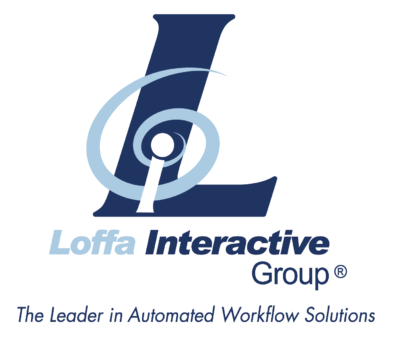The Costly Comfort of Outdated Technology: Why Billion-Dollar Financial Service Firms Still Rely on Faxes
Why Wall Street Can’t Let Go of Fax Machines
 In our digitally driven world, it’s almost comical to think that Wall Street, the epitome of fast-paced financial innovation, still clings to the humble fax machine. Yet, despite sleeker, smarter alternatives, this relic from the 1980s continues to buzz and beep its way through billions in transactions.
In our digitally driven world, it’s almost comical to think that Wall Street, the epitome of fast-paced financial innovation, still clings to the humble fax machine. Yet, despite sleeker, smarter alternatives, this relic from the 1980s continues to buzz and beep its way through billions in transactions.
The Undying Loyalty to Fax Machines: For decades, fax machines have been more than office equipment; they’ve been trusty sidekicks in the high-stakes world of finance. Contracts, trade confirmations, and legal documents zip through these machines daily. A surprising statistic from a recent survey points out that over 80% of Wall Street firms are still loyal to their faxes. This persistence stems from a mix of stringent security protocols, the comfort of paper trails, and a ‘better safe than sorry’ legal framework.
Why Fix What Isn’t Broken? Fax machines, in the eyes of many finance veterans, are seen as fortresses. Their simplicity and detachment from the internet shield them from cyber threats and data breaches. Plus, the tangible paper trail is like gold in the legally intricate world of finance—something digital files still struggle to match in perceived reliability and judicial weight.
The Price of Tradition: However, commitment to fax technology is not without its drawbacks. The costs of maintaining these machines—let alone the office space they consume—can be steep. Not to mention, the environmental toll of paper waste is increasingly hard to justify as businesses move towards greener practices.
 Digital Dawn on the Horizon: Despite the stronghold of tradition, tides are turning. A vanguard of firms is ditching the old ways, turning to blockchain, artificial intelligence, and cloud solutions to conduct transactions that are not only faster but also greener. These technologies promise a revolution in how finance does business, challenging the old guard to evolve or be left behind.
Digital Dawn on the Horizon: Despite the stronghold of tradition, tides are turning. A vanguard of firms is ditching the old ways, turning to blockchain, artificial intelligence, and cloud solutions to conduct transactions that are not only faster but also greener. These technologies promise a revolution in how finance does business, challenging the old guard to evolve or be left behind.
Navigating Change: Change never comes easy, especially in a sector as regulated and established as finance. The transition from fax to digital is mired in regulatory red tape, compatibility issues with older systems, and a cultural hesitance to give up tried-and-true methods. Yet, the potential for improved efficiency and security is drawing more converts by the day.
Conclusion: The fax machine’s days on Wall Street may be numbered, but its legacy will serve as a reminder of the industry’s resilience and caution. The road ahead is paved with digital possibilities that promise to redefine security and efficiency. For the financial industry to remain at the forefront of innovation, it will need to embrace these new tools, leaving the comforting beep of the fax machine behind as a sound of the past.
 It’s time for the financial sector to rethink its attachment to outdated technology. Join the conversation on how we can foster a smoother transition to secure, efficient digital solutions in finance.
It’s time for the financial sector to rethink its attachment to outdated technology. Join the conversation on how we can foster a smoother transition to secure, efficient digital solutions in finance.




 By integrating FVD and PBIN into their workflows, brokers establish critical checkpoints that illuminate and mitigate risks before costly errors occur. For instance, a Letter of Free Funds generated through FVD for a DVP trade or a Form 1 Schedule A (F1SA) managed through PBIN for a Prime Broker trade would have identified the credit and documentation lapses that resulted in the hefty FINRA fine.
By integrating FVD and PBIN into their workflows, brokers establish critical checkpoints that illuminate and mitigate risks before costly errors occur. For instance, a Letter of Free Funds generated through FVD for a DVP trade or a Form 1 Schedule A (F1SA) managed through PBIN for a Prime Broker trade would have identified the credit and documentation lapses that resulted in the hefty FINRA fine. Loffa’s products not only enhance compliance but also bring significant efficiency gains by automating historically manual processes. FVD offers a paperless solution that automates the verification of Regulation T balances, while PBIN utilizes an Automated Communication Network to seamlessly complete Prime Broker documentation tasks, streamlining operations and reducing the likelihood of human error.
Loffa’s products not only enhance compliance but also bring significant efficiency gains by automating historically manual processes. FVD offers a paperless solution that automates the verification of Regulation T balances, while PBIN utilizes an Automated Communication Network to seamlessly complete Prime Broker documentation tasks, streamlining operations and reducing the likelihood of human error.

 In today’s dynamic financial landscape, strict adherence to regulatory norms isn’t just a legal requirement—it’s a competitive edge. Recent enforcement actions by regulatory authorities like FINRA highlight the critical nature of compliance, with significant penalties being levied for lapses. An eye-opening case saw a capital markets firm fined over $700,000 for failures in handling trade confirmations.
In today’s dynamic financial landscape, strict adherence to regulatory norms isn’t just a legal requirement—it’s a competitive edge. Recent enforcement actions by regulatory authorities like FINRA highlight the critical nature of compliance, with significant penalties being levied for lapses. An eye-opening case saw a capital markets firm fined over $700,000 for failures in handling trade confirmations. Real-Time Monitoring and Alerts: Loffa’s system offers continuous surveillance of compliance-related activities within the workflow your firm leverages for post-trade settlement operations. It provides Straight Through Processing (STP) in real-time, identifying DK’s that enable prompt corrective action. This proactive approach helps prevent minor issues from becoming major compliance failures.
Real-Time Monitoring and Alerts: Loffa’s system offers continuous surveillance of compliance-related activities within the workflow your firm leverages for post-trade settlement operations. It provides Straight Through Processing (STP) in real-time, identifying DK’s that enable prompt corrective action. This proactive approach helps prevent minor issues from becoming major compliance failures. Benefits of Implementing Loffa’s Automated Compliance Solutions:
Benefits of Implementing Loffa’s Automated Compliance Solutions: your firm’s integrity and financial well-being. Loffa empowers firms to not only meet but exceed regulatory expectations, setting new standards for operational excellence in the financial industry.
your firm’s integrity and financial well-being. Loffa empowers firms to not only meet but exceed regulatory expectations, setting new standards for operational excellence in the financial industry.